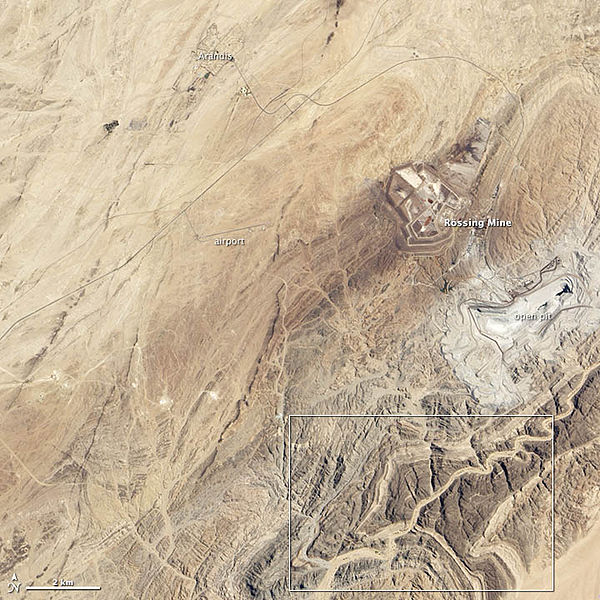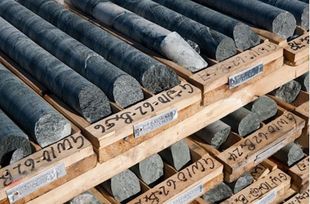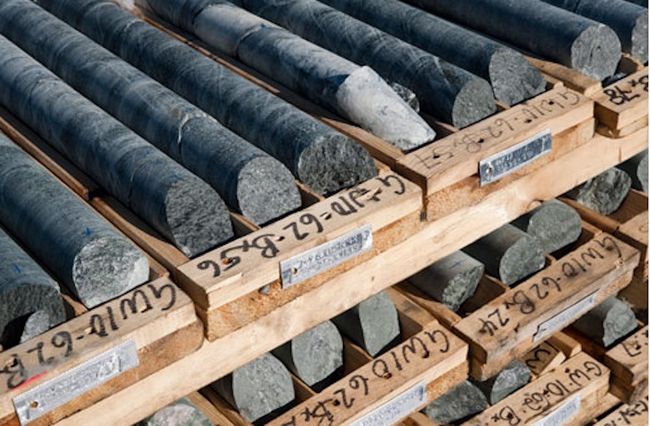Mineral prospecting is a fundamental step for the discovery and characterization of a mineral deposit. A prospective campaign takes place through the recognition of areas with economic potential and the selection of priority targets on a regional scale, progressively moving on to larger scales where detailed studies will be carried out.
The activity also involves great financial risks since the discovery of economically viable deposits takes time and, sometimes, several failed attempts.
The methods of mineral prospecting are diverse and depend on the type of substance being studied. In today's article we list some prospecting methods and their main characteristics, see below.
1- Bibliographic compilation and analysis
Bibliographic research is an important ally in gathering existing information and studies already carried out in the target region. Preparation for mineral prospecting begins with research in articles and publications , in addition to studying geophysical and geological maps and reading available technical reports.
For this survey, searches must be carried out using different keywords that clearly define the objective of the research or the information being sought. At this stage, a significant volume of information will be found that must be filtered according to the quality and relevance of the content.
For those who want to escape the large flow of information that direct searches provide, it is possible to carry out searches on more specific platforms , according to the information you want to obtain:
Google Scholar: repository of theses, scientific articles, abstracts, monographs, dissertations and books;
Scielo: articles and other academic works. This platform has an advanced search tool, where you can select the index you want to search, such as author, journal, abstract or title;
ResearchGate: file and publication sharing, forums, methodological discussions, as well as semantic search for abstracts of publications stored in the repository;
CPRM: access to corporate databases that gather information on geology and mineral resources in geological maps, available for free download;
IBGE: access to topographic sheets at different scales, also free of charge.
SEDAR: publications of listed companies. On the platform you can find Public Technical Reports (NI43-101 or JORC).
When the focus of the research is a specific substance and when there are no similar occurrences in the region, the bibliographic search must be carried out in order to analyze in the first instance which types of rock could be the source of the mineral.
2- Analysis of aerial images
Aerial image analysis can play an important role in identifying new mineral prospecting targets. The use of remote sensing techniques, through visual interpretation of satellite/radar images , is an effective solution for analyzing different forms of landscape capture, which are essential for identifying and interpreting the various geological elements exposed in the images.
The different types of sensors (satellites) available today enable the creation of DEMs (Digital Elevation Models), mapping of geological structures, production of pre-field maps, identification of landforms and logistical planning (identification of roads, access routes, drainage, etc.).




Some aerial images can be obtained for free on platforms such as:
Google Earth: The platform makes it possible to obtain images with good spatial resolution that can be georeferenced for application in mineral prospecting.
INPE (National Institute for Space Research ) : access to a database with images from more than 10 satellites. The standard method of sending images (free of charge) is by file transfer (FTP) via the Internet.
Terra Incógnita: Program for downloading maps from web sources or local file maps to various GPS programs or devices.
For those who wish to invest a little more in this method, some modern satellites have resolutions capable of identifying targets for mineral prospecting using the reflectance of minerals (the way each mineral reflects or absorbs sunlight, recorded by airborne or orbital sensors).
In this case, with the help of various spectral signature libraries and satellite image processing software, it is possible to identify anomalous areas of mineral concentration or groups of minerals , enabling the identification of hydrothermal alteration zones and anomalous mineral concentrations.
3- Construction of base maps
Depending on the availability of information, it is possible to carry out initial planning and interpretation of the defined mapping area , before carrying out field visits.
In this case, it is possible to assemble a database (shapes, high-resolution images, geological maps, digital terrain model) and integrate them into a preliminary map , which will gather the main regional geological information, serving as support for the beginning of local geological studies. To obtain this information, it is possible to use platforms such as:
CPRM: geological, geophysical, topographic maps, drainage map, etc…
IBGE: topographic maps
GOOGLE EARTH: aerial images
4- Field Surveys
Detailed and in-depth knowledge of the local geology is the basic condition for a successful research plan . In addition to other factors such as the structural conditions, stratigraphy and petrography of the section, the field survey is a fundamental step for this reconnaissance.
Fieldwork is carried out through initial visits, which can be done on foot or by vehicle. The intention is to familiarize oneself with the terrain and examine outcrops, known occurrences and road cuts or embankments.
Initial field surveys should preferably be carried out after a bibliographic study and preliminary photointerpretation of the area of interest , directing the observations that should be made in the region to geologically more promising locations , where we have knowledge of complete stratigraphic sections, important mineralizations or even more common photointerpretation patterns.
Careful study of outcrops, particularly rock types or formations that are being found for the first time, will facilitate the geological mapping stage of the area.
5- Geological Mapping
In Geological Mapping, the responsible professional will gather all the information obtained and interpreted in bibliographic, field and laboratory studies, in a map that seeks to determine the geographic position of rocks that are under the surface and their attitudes. The final product is a georeferenced Geological Map, presenting lithological and structural information of the geological bodies present at the study site.
The original data obtained in the mapping must be organized in the form of a Service Report and/or Database on a computer containing : “points” map, petrographic analysis sheets, chemical analyses, transcription of the notebook, etc.
The report must also focus on aspects that are important to the geological knowledge of the area within the scope of mineral prospecting , in addition to facts considered fundamental and interpretations and hypotheses relating to geological evolution.
6- Geophysics
Prospecting geophysics investigates the first five kilometers of the Earth's crust . This investigation is carried out by observing the effects caused on physical fields and wave propagation by variations in the physical properties of crustal materials. The variations in physical properties are related to the concentration of minerals that are economically important (ore minerals) or to the structures where these minerals are found.
Since the concentration of ore minerals is controlled by geological phenomena, it is possible, based on knowledge of these phenomena, to establish a prospecting strategy with the most suitable geophysical methods for their detection.
For the study of geology on a regional basis, it is possible to use public maps of geophysical surveys that are made available to the public by some Geological Services.
For a more detailed study that provides greater assertiveness in the local geological study, it is recommended that a more detailed geophysical study be carried out , using techniques such as gravimetry and magnetometry.
The costs of geophysical methods vary greatly, with surveys carried out by air being the most expensive , while local methods and walks are more affordable.
7- Survey
It is the most common method for prospecting most substances extracted through mining , capable of providing important information on the configuration of subsurfaces , supporting the recognition of the quantity and quality of the material studied.




Drill holes should be designed to provide the greatest amount of information about the grade distribution in the mineral deposit , as well as to provide a reasonable basis for geological interpretation.
The cores that will be collected along the drilled interval will optimize the representativeness of the mineralized body, reducing uncertainties in both geological modeling and mineral resource estimation.
Costs vary depending on the type of rock to be drilled and the depth to be reached.
In short, there are several mineral prospecting methods and ideally they should be used together to gain a better understanding of the target area . Therefore, the steps in a mineral prospecting process may include:
- Bibliographic research, seeking all available information on the types of mineral occurrence and studies already carried out in the region;
- Analysis and interpretation of satellite images of the region of interest and nearby surrounding areas;
- The creation of a base map to carry out initial studies of the area, seeking to verify in the field some information obtained in the office;
- Geological mapping, to identify rocks, minerals, terrain features and other characteristics of the area to be prospected.;
- Terrestrial geophysics (depending on the type of deposit), adding new information about the configuration of the formations present in the region;
- The drilling campaign, which will increase the reliability of the data collected in the previous stages and will support the characterization of the deposit.
